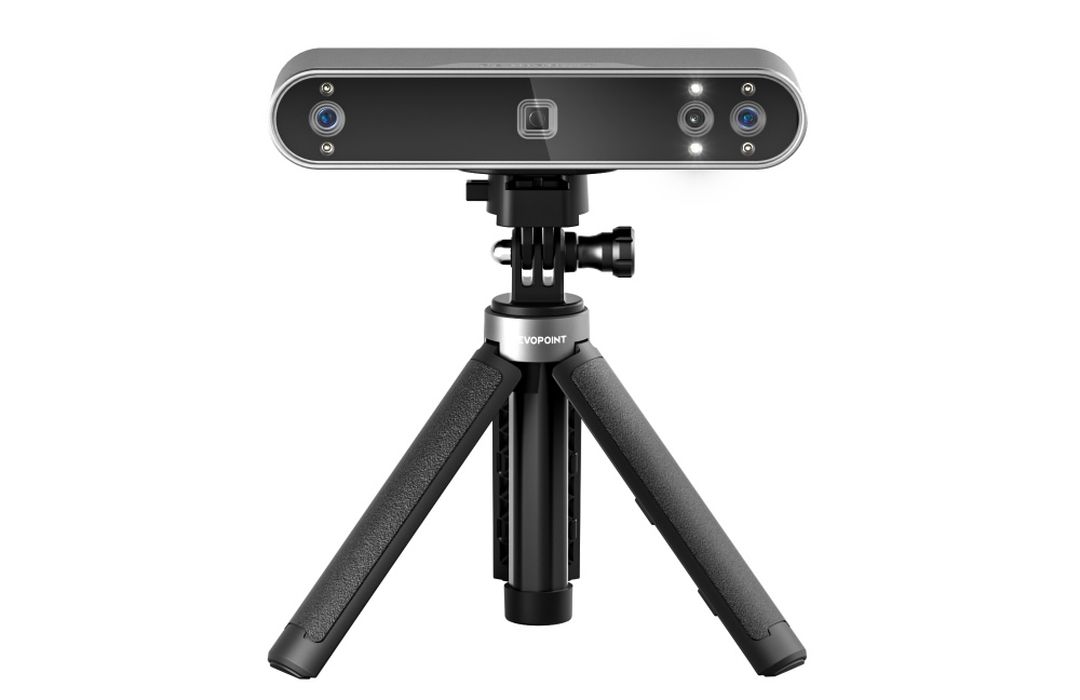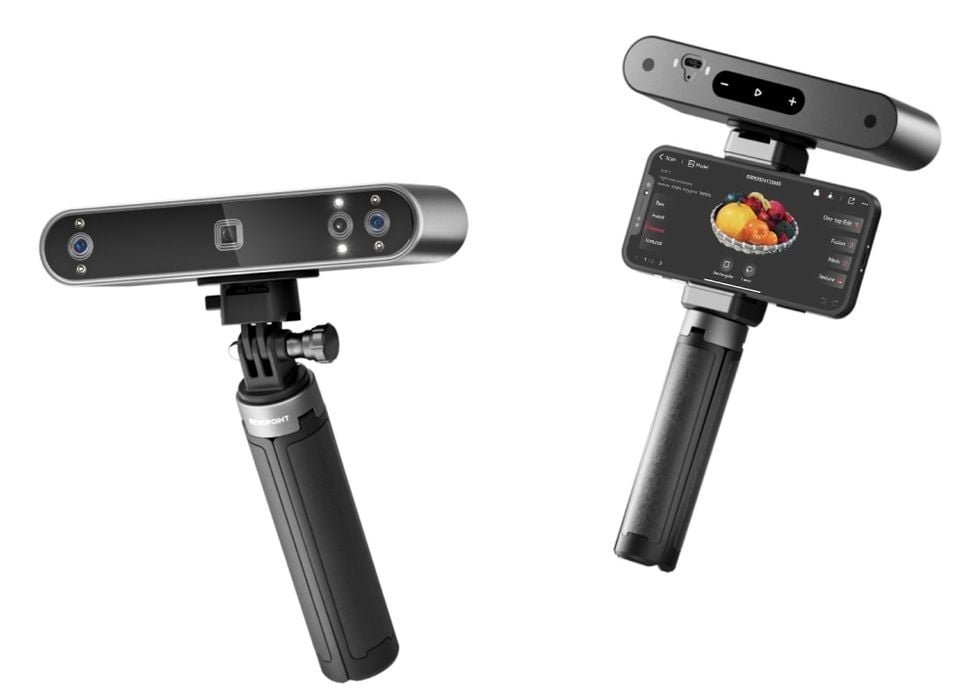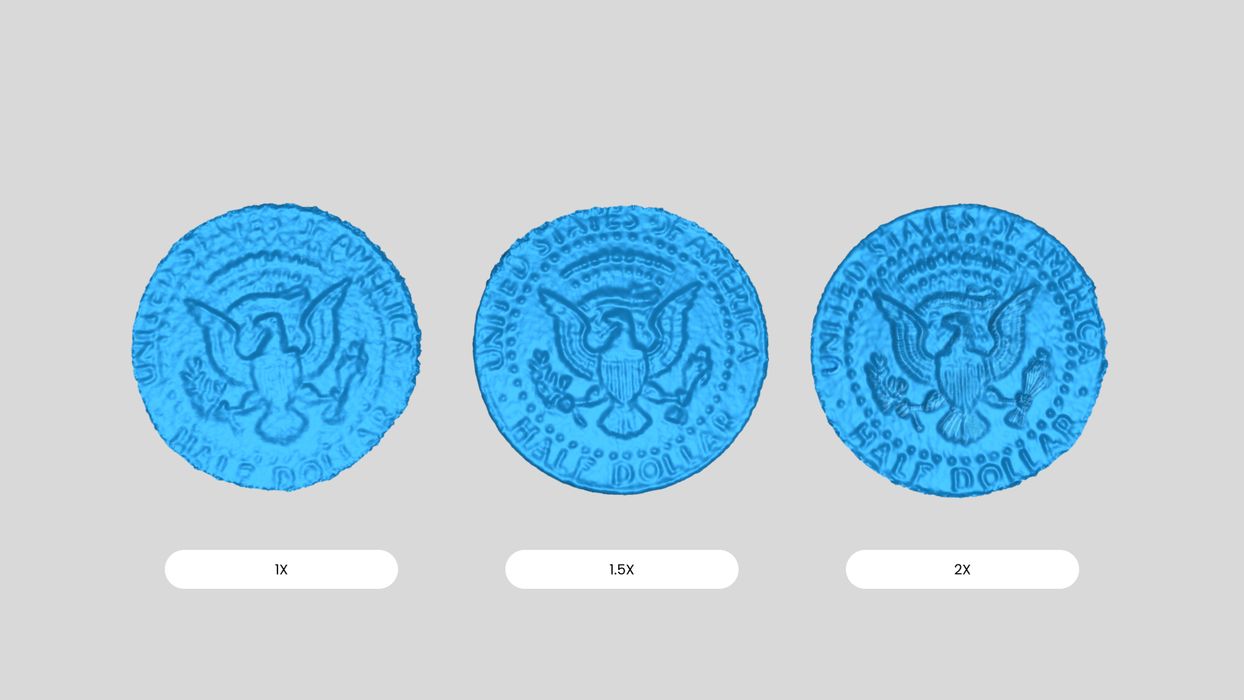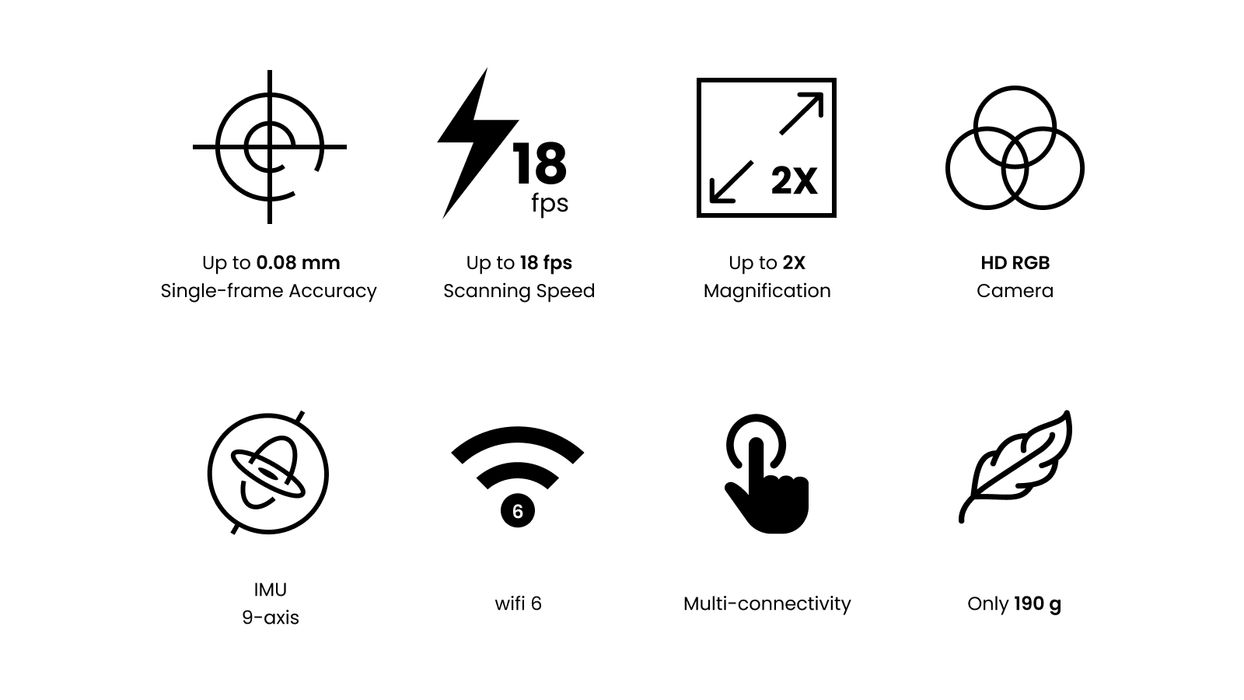
SPONSORED CONTENT
Revopoint’s new POP 3 Plus 3D scanner is quite an improvement over its predecessor.
The company has made its name on a series of 3D scanning devices of different capabilities, from the ability to scan large areas to very small objects. The POP series 3D scanner is considered a “medium” scanner.
The size rating of a 3D scanner is all about the types of objects it’s capable of handling. For the POP 3 Plus, it can scan within a range of 150-400 mm and can handle objects as large as 2m across. The POP 3 Plus can operate as a handheld unit when scanning larger items, but also be stationed on a tripod with a turntable for capturing smaller objects.
There are plenty of handheld 3D scanners on the market these days, but the POP 3 Plus has an advantage with some new hardware and software features.

They’ve improved the accuracy and precision of the POP 3 Plus. Precision refers to the ability to place a scanned element in the same position when repeatedly scanning it. This scanner can do so with an incredible 0.08 mm accuracy, which is quite impressive. This should eliminate “shadow scans” where wraparound scans don’t exactly meet properly.
Revopoint POP 3 Plus scanner can achieve 20% more accuracy and precision compared with POP 3 due to upgraded self-developed hardware and software features. There’s a new high-precision calibration board that’s made using an advanced lithographic process, which helps the scanner maintain 0.08 mm accuracy and precision of 0.04 mm.
The biggest challenge with handheld 3D scanners is the capture process. The scanner must be fast enough to match the operator’s movement and deal with the loss of tracking that occurs when the scanner is accidentally pointed in the wrong direction. Revopoint has taken some interesting steps to alleviate these issues.

The key seems to be the inclusion of a nine-axis IMU. This component tracks the POP 3 Plus while in motion, helping it to skip any faulty frames caused by shaking. This is much like the optical stabilization you’d see on advanced cameras, except here, it is for 3D scanning.
They’ve also developed a new Global Markers tracking feature in their software for scans that need markers. This new tracking mode improves marker tracking as well as the volumetric accuracy of the scan.
All of these features together should ensure a much easier experience when scanning in handheld mode, something that is often challenging on other equipment.

Revopoint has included a new optical zoom feature on the POP 3 Plus, which enables the operator to perform up to a 2X magnification for the capture of very fine details. This is a unique feature I have not seen on other 3D scanners and should be quite useful for capturing small objects with tiny features.

The POP 3 Plus 3D scanner uses the structured light method for capturing objects but also includes color capture. The device includes an HD RGB camera that collects color texture information that the software can later map onto the object’s surface.
There is an LED lighting system that illuminates the subject so that shadows don’t become part of the scan. This enables the POP 3 Plus to operate both indoors and outdoors.
The POP 3 Plus scanner weighs only 190g, which is less than the weight of a McDonald’s Big Mac. That ensures the machine is very easy to move about, as heavier scanners can make it much harder to make precise and smooth movements.
The POP 3 Plus scanner operates with a nearby PC running the Revo Scan 5 software, which is available for download on Windows, MacOS, iOS, and Android platforms. Of course, you’ll need a machine that meets minimum hardware specifications. Those requirements are not too arduous, as you need a Mac with an M1 Pro or better chip or a Windows machine with a modern i5 chip or better.
Connection to the software from the scanner can be done with WiFi or cable, which can remove the necessity for cables during scanning. Typically cables can get tangled up and can even mess up the scan, so using a scanner wirelessly would be quite an advantage. Devices can use either WiFi or USB-C to connect to the device, except for iOS devices that can only use WiFi.

Once the scan is completed, the software is fully able to process the captured point cloud and transform it into a fully 3D printable model. Export formats include not only STL, OBJ, and 3MF but also ASC, PLY, GLTF, and FBX.
Finally, Revopoint has a robust online community spanning multiple social networks and sites.
The POP 3 Plus 3D scanner looks to be quite a powerful device that is easy to operate. If you’re in the market for a lightweight 3D scanner with easy operation, consider this product. For more details, Please check the following online web stores:
Via Revopoint
